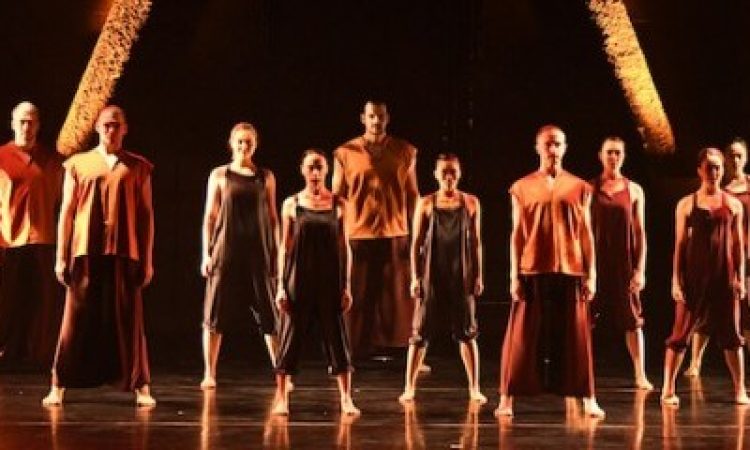As I walk into the Suzanne Roberts Theatre to see Koresh Dance Company, I know what to expect: dancers with sharp technique, intensely furrowed brows, and a keen sense of musicality. Roni Koresh introduces his new work Inner Sun as a celebration of the light we all have inside of us and as an ode to his personal passion for dance.
John Levis’ downbeat driven music and Karl Mullen’s text propel the dance. The weighted, metered tone of Mullen’s voice adds a melodic quality to the sound score, but the poetry itself leaves little space for conceptual interpretation. Mullen tells the audience what to glean from the work, and I do not feel encouraged to develop my own context or narrative.
In the program notes, Inner Sun is separated into distinct sections: “Ghost Particles,” “Lives Matter” and “Heat,” among others. Although the costumes, number of dancers, and music shifts, the performers are choreographically indistinguishable. To indicate a transition between sections the dancers pause, stare pointedly at the audience with the iconic Koresh glare, and move on to their next formation. Koresh’s combination of modern, jazz, ballet, and middle eastern folk movement is initially striking but rarely changes in dynamic tone throughout either act.
Intermittently, the dancers interrupt their perfectly timed arabesques and rhythmic gestural phrases with playful and celebratory bursts of movement. I crave more of these genuine jolts of jubilation. How often is internal light, passion, fire, inspiration, or heat ever confined to perfectly staggered, centrally aligned rows? The prescribed, predictable formations and unending unison lacks the spark that ignites when the dancers let loose and shake to the beat for pleasure’s sake.
The section in the middle of the program, titled “Lives Matter,” is distinct from the other pieces; however, its message is vague. The dancers speak, argue, and laugh with each other before the entire cast approaches the audience, standing at the edge of the stage to call out “the future is, lives matter.” The men stand in salute while the women perform slinky sweeps of their hips and arms. Krista Montrone crosses the stage with a sign stating “APPLAUSE.”
In a time when politics is divisive, I am not surprised by Koresh’s attempt to include socio-political issues in the dance. The phrase ‘lives matter,’ however, is weighted. I think in our current culture it is negligent to say ‘lives matter’ without clarity of message or any engagement of the social justice issues at hand. This piece feels out of place, insensitive and, in comparison to the other numbers that leave no room for interpretation, confusing.
I came to the performance to see Koresh Dance Company but stayed in my seat to watch Andrea Romesser and Melissa Rector. During both Inner Sun and Matters of The Heart (the second act, dedicated to recently deceased Michael Velez), Romesser commands Koresh’s aesthetic with nuanced and magnetic physical artistry. She marries the aggressive, technical choreography with a blissful sense of radiance. Rector’s precise lines, emotional dedication, and somatic presence clearly reflects her years of experience embodying this aesthetic while making it uniquely her own. Even inside of the hundredth tilt these women make every repetition worth watching.
Inner Sun, Koresh Dance Company, Suzanne Roberts Theatre, Apr. 26-29






